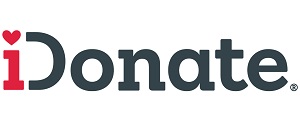 Special to the Philanthropy Journal
Special to the Philanthropy Journal
By Ray Gary
Giving as a percentage of disposable income has been stuck at 2% for more than 50 years. Could it be people are increasingly stingy with their wealth? Or the everyday donor is more likely to click, swipe and tap their donation than pull out their checkbook? Or has giving become too burdensome? The answer might surprise you.
Today’s Consumers are Today’s Donors
 Apple, Uber and Amazon inadvertently disrupted the nonprofit sector in the last few years by putting a huge spotlight on how easy it is for consumers to purchase products and services anytime and anyplace, on-demand, with a click of a button. This has set a new standard for what consumers (who are also today’s modern donors) expect, and it flows over to supporting the causes they care about. People’s habits and expectations have evolved with technology while traditional ways to give have stayed largely the same, causing a technology chasm that has created a divide between modern donors and nonprofits.
Apple, Uber and Amazon inadvertently disrupted the nonprofit sector in the last few years by putting a huge spotlight on how easy it is for consumers to purchase products and services anytime and anyplace, on-demand, with a click of a button. This has set a new standard for what consumers (who are also today’s modern donors) expect, and it flows over to supporting the causes they care about. People’s habits and expectations have evolved with technology while traditional ways to give have stayed largely the same, causing a technology chasm that has created a divide between modern donors and nonprofits.
Nonprofits too often forget today’s consumers are today’s donors.
But what are some proven methods nonprofits can utilize to close this chasm and positively impact giving? The answer lies in fusing consumer culture with digital fundraising technology.
5 Keys to Moving the Needle on Giving
The impact of the nonprofit tech chasm is twofold – consumers are not donating to their full giving potential and nonprofits are not attracting and retaining today’s donors as long term philanthropic partners. In fact, one study by the Urban Institute reports that for every 100 donors gained, 103 are lost. However, connecting with donors on their terms doesn’t have to be a daunting endeavor. Start by implementing the five key strategies outlined below, and an almost immediate increase in connections and donations will follow.
- Become marketing driven. If your organization’s strategy only prioritizes direct response, events and year-end giving, it’s time to devise a bolder marketing strategy. Donors live in networks, not data bases. A solid marketing mantra is to build an audience with a cause, give them a reason to want to help, then create a movement. This begins with building conversations, not campaigns. Embed the messages where the donors are and pull them in with your story.
- Expand digital channels. Contribution forms that reigned supreme for decades are not entirely convenient these days, yet it’s shocking how many nonprofits continue to include these hard copy donation forms at events and in their annual reports. Focus efforts moving forward on streamlining donation pages on your organization’s website. Start a text-to-donate campaign which conveniently allows donors to give anytime and anywhere they may be. Also consider encouraging peer-to-peer programs which capitalize on your donors’ own networks to reach new supporters.
- Optimize your channels. Google says 60% of all web traffic comes from a mobile device yet 80% of giving pages are not optimized for mobile. While you’re expanding digital channels, be sure you’re creating frictionless giving experiences by testing frequently. Ensure your site is mobile and tablet friendly, that the navigation of your website is intuitive and that there’s a quick, obvious path to the donation section. The “Donate Now” button should stand out no matter which page a visitor is on. Are analytics set up for website, fundraising and social media channels? Does your staff confidently understand how those analytics should inform their strategy? Consider this training a continued education opportunity and encourage teams to evolve with the latest technology and best digital practices.
- Create great giving experiences. According to a survey by Decision Analyst, 74% of nonprofits say their online giving experience needs improvement and 78% of nonprofits say they could improve their use of technology to receive donations. Many nonprofits struggle between donation management and systems integration programs trying to get a holistic view of their donor. In the meantime, donors are simply expecting their giving experience to be as convenient as an iTunes or Zappos purchase. Invest in the technology on behalf of your donors and make it easy for them to support your cause. Donations should be able to be completed in 10 seconds, friction-free and socially sharable.
- Implement modern systems. A recent study has shown that current nonprofits allocate less than 2% of their operating budgets to technology. Nonprofit professionals, who are often already spread thin, are wasting time stitching together multiple solutions from various systems. Software should be in line with your workflow, not the other way around. Eliminate data silos and remember the data should be extensible, analytic-driven and open and available wherever your staff is.
Bonus Closing Tip: Be Passionate! The statistics will show you digital fundraising is the way forward, yet changing the culture of giving within an organization means convincing key stakeholders to accept and invest in technology and training. If you don’t exude confidence and passion about this new direction, neither will they. Trust that with the right planning, timelines and marketing, your team will succeed and donations will significantly increase.
Ray Gary is the CEO of iDonate, the fastest growing digital fundraising solution for nonprofits. iDonate helps organizations meet the needs of today’s connected donor through technology and a great giving experience. Launched in 2010, the Dallas-based company helps nonprofits raise more money and gifts to support the organizations that are trying to make a difference. The company’s mission is to transform charitable giving by changing the way the world thinks – and more importantly, acts – around giving.




